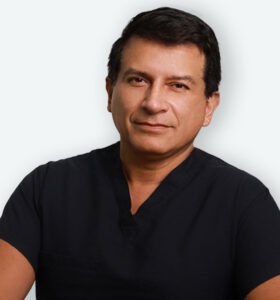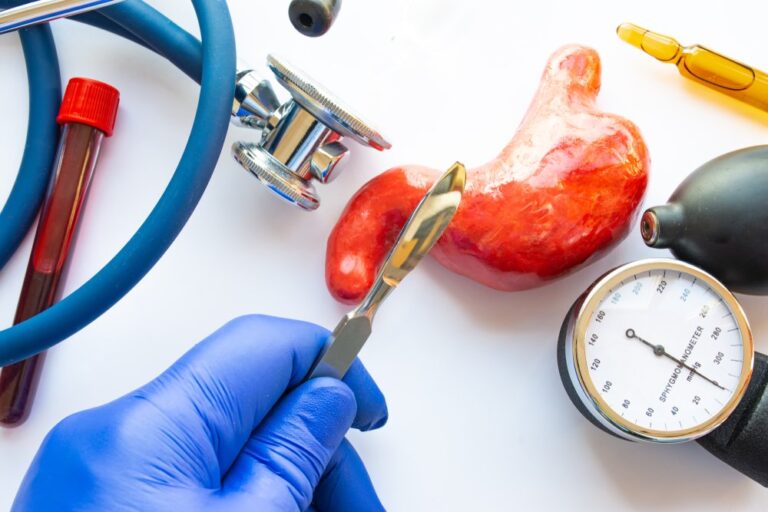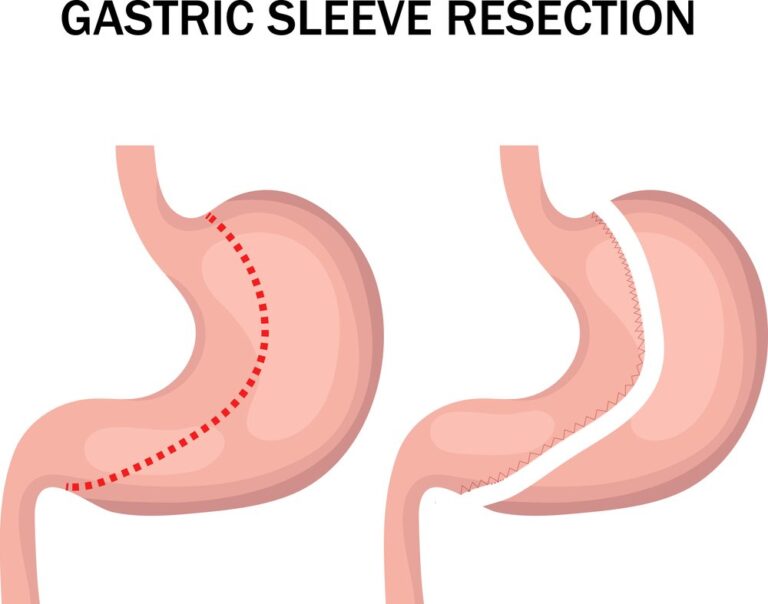After gastric sleeve surgery, the small incisions made on the abdomen may initially appear as small, raised, and red wounds. However, with proper care and the natural healing process, gastric sleeve scars before and after gradually flatten, lighten in color, and blend with the surrounding skin. The final appearance of these scars can vary based on individual factors, but following healthcare provider’s scar care instructions and maintaining a healthy lifestyle can contribute to optimal results. Regular follow-up appointments are important to monitor the healing process.
Get a $1000 Off on Gastric Sleeve in Miami
| Before Gastric Sleeve Surgery |
|---|
| Existing scars from previous abdominal surgeries or medical procedures |
| Presence of excess skin or stretch marks due to obesity |
| After Gastric Sleeve Surgery |
|---|
| Small incisions made on the abdomen during the procedure |
| Strategic placement of incisions to minimize visibility |
| Scars initially appear as small, raised, and red wounds |
| Over time, scars flatten, lighten in color, and blend with surrounding skin |
| Final appearance varies based on individual factors such as skin type and healing process |
Early Post-Surgery Scarring and Wound Care
During the early post-surgery period, proper wound care is essential for optimal healing and minimizing scarring after gastric sleeve surgery. Here are some important points to consider:
- Follow your surgeon’s instructions: Your surgeon will provide specific guidelines on wound care, including when and how to clean the incision sites. Follow their instructions closely to promote proper healing.
- Keep the incision sites clean and dry: Gently clean the incision sites with mild soap and water as instructed by your surgeon. Avoid scrubbing the incisions or using harsh chemicals. After cleaning, pat the area dry with a clean towel or allow it to air dry.
- Protect the incision sites: Cover the incision sites with sterile dressings or adhesive strips as recommended by your surgeon. These dressings help protect the incisions from infection and provide support to the healing tissues.
- Avoid excessive moisture: Moisture can increase the risk of infection and delay healing. Avoid activities that may cause excessive sweating or moisture buildup around the incisions. If necessary, use absorbent pads or clothing to help keep the area dry.
- Avoid picking or scratching the incisions: It’s important to resist the urge to scratch or pick at the incisions, as this can disrupt the healing process and increase the risk of infection. Keep the incisions clean and avoid any unnecessary touching.
- Monitor for signs of infection: Watch for signs of infection such as increased redness, swelling, warmth, or drainage from the incision sites. If you notice any concerning symptoms, such as fever or severe pain, contact your healthcare provider immediately.
- Maintain a healthy lifestyle: Follow a balanced diet, stay hydrated, and avoid smoking and excessive alcohol consumption. A healthy lifestyle can support proper wound healing and overall well-being.
Remember, everyone’s healing process is unique, and individual experiences may vary. It’s crucial to consult with your healthcare provider or surgical team for personalized guidance and to address any concerns regarding early post-surgery scarring and wound care.
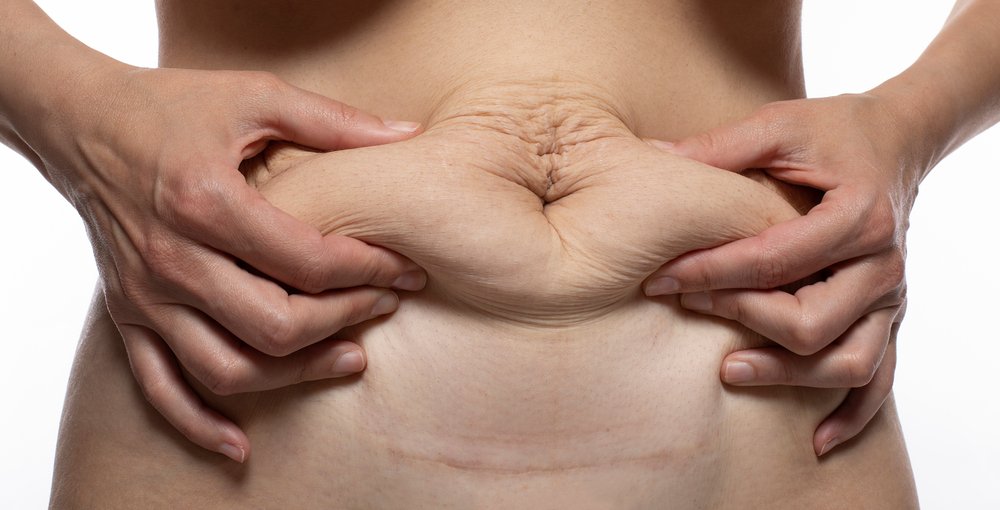
Managing Scar Appearance and Minimizing Discomfort
Managing the appearance of scars and minimizing discomfort after gastric sleeve surgery is important for many individuals. Here are some strategies that can help:
- Scar massage: Gently massaging the scar tissue with clean hands or using a silicone-based gel or cream can help improve blood circulation and break down scar tissue. Follow your healthcare provider’s instructions on when to start scar massage and the appropriate techniques to use.
- Sun protection: Protecting the scars from the sun’s harmful UV rays is essential in minimizing their visibility. Apply sunscreen with a high SPF to the scarred area or cover it with clothing when exposed to sunlight.
- Topical treatments: Over-the-counter scar treatments, such as silicone sheets or gels, may help reduce the appearance of scars. Consult your healthcare provider before using any topical treatment to ensure it is appropriate for your situation.
- Healthy lifestyle choices: Maintaining a healthy lifestyle can contribute to optimal wound healing and scar appearance. Eat a balanced diet rich in vitamins and minerals, stay hydrated, and avoid smoking or excessive alcohol consumption.
- Patience: Scars take time to mature and fade. It’s important to be patient and allow the natural healing process to take place. Avoid trying multiple treatments simultaneously or excessively worrying about the appearance of scars in the early stages of healing.
- Emotional support: Dealing with visible scars can have emotional implications. Seek support from friends, family, or a support group to discuss any concerns or feelings you may have regarding your scars.
Remember to consult with your healthcare provider for personalized advice on scar management and to discuss any specific concerns you may have about scar appearance or discomfort. They can provide guidance based on your unique circumstances and monitor the healing process.
Scar Maturation and Long-Term Effects
As your body heals, scars from gastric sleeve surgery will undergo a maturation process and may change over time. Here are some factors to consider regarding scar maturation and long-term effects:
- Scar appearance: Initially, scars may appear red, raised, and firm. Over time, they tend to become flatter, softer, and lighter in color. The maturation process can take several months to years, and individual experiences may vary.
- Scar size: The size of scars may vary depending on the surgical technique used and individual healing characteristics. Most gastric sleeve scars are small incisions, typically ranging from 1-2 inches in length.
- Scar sensitivity: Scars may be sensitive or itchy during the healing process. This is normal and can be managed with gentle scar massage and moisturizers recommended by your healthcare provider.
- Scar visibility: While scars generally fade over time, they may remain visible to some extent. Factors such as skin type, scar location, and individual healing response can influence scar visibility. Sun protection and scar care can help minimize their appearance.
- Long-term effects: In the long term, most gastric sleeve scars become less noticeable and blend with the surrounding skin. However, scars are permanent and may always be visible, albeit less pronounced, depending on individual factors.
It’s important to note that scar appearance and long-term effects can vary among individuals. Maintaining a healthy lifestyle, following scar care recommendations, and managing your expectations can contribute to the best possible outcome.
Assessing the Initial Condition of the Surgical Area
Assessing the initial condition of the surgical area is crucial after gastric sleeve surgery to ensure proper healing and identify any potential issues. Here are some key aspects to consider when evaluating the surgical area:
- Incision sites: Check the incision sites for any signs of redness, swelling, or discharge. These may indicate infection or other complications. Normal healing incisions may appear slightly raised, pinkish, and have sutures or steri-strips in place.
- Wound integrity: Assess the integrity of the surgical wounds to ensure they are closed properly. Look for any gaps or openings in the incisions that may require medical attention.
- Drainage: Monitor for excessive or unusual drainage from the incision sites. While some mild drainage is expected, excessive or foul-smelling fluid may indicate an infection or other complications.
- Pain or discomfort: Evaluate the level of pain or discomfort in the surgical area. Mild to moderate pain is common after surgery, but severe or worsening pain may warrant further evaluation.
- Swelling: Observe for any excessive swelling around the incision sites. Swelling is a normal part of the healing process, but severe or prolonged swelling should be evaluated by a healthcare professional.
- Skin color: Check the color of the skin around the incisions. Normal healing incisions may have pinkish or slightly darker skin color, but significant changes in skin color or bruising may indicate underlying issues.
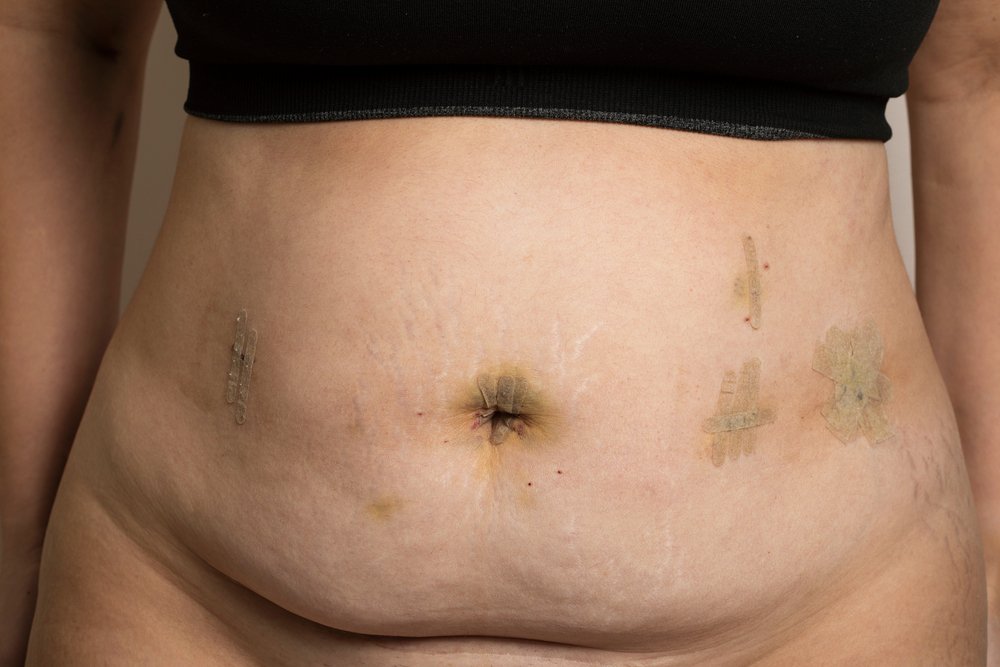
It’s important to document and communicate any concerns or changes you notice in the surgical area to your healthcare provider. They can assess the condition, provide appropriate guidance, and address any potential complications that may arise during the healing process. Regular follow-up appointments with your healthcare team are crucial to ensure proper monitoring of the surgical area and overall recovery progress.
Preparing for Surgery and Discussing Scar Placement
Preparing for gastric sleeve surgery involves several steps to ensure a smooth surgical experience and optimal scar placement. Here are some important considerations:
- Pre-operative instructions: Follow your healthcare provider’s pre-operative instructions carefully, which may include dietary changes, medication adjustments, and lifestyle modifications. Adhering to these guidelines helps prepare your body for surgery.
- Discussion with the surgeon: During your pre-operative appointments, have a detailed discussion with your surgeon about scar placement. They will explain the planned incision sites and provide an opportunity for you to ask questions or express any concerns regarding scar visibility or placement.
- Reviewing options: Your surgeon will consider various factors, including your body shape, skin elasticity, and previous scars, when determining the optimal placement of the incisions. They will aim to minimize visible scarring while ensuring safe access to perform the surgery effectively.
- Individual considerations: Your surgeon will take into account your individual preferences and goals for scar placement. They will work with you to find a balance between minimizing visible scarring and surgical access.
- Incision placement: The most common placement for gastric sleeve incisions is the abdomen. These incisions are usually small and strategically placed to minimize their visibility when you’re wearing clothing or swimwear. Your surgeon will discuss the specific locations of the incisions based on your unique circumstances.
- Post-operative scar care: After surgery, your healthcare provider will provide instructions on scar care, including wound dressing changes, cleaning, and the use of topical treatments or silicone sheets. Following these instructions can help promote proper wound healing and minimize scar appearance.
Remember, individual experiences with scarring can vary, and it’s important to have open and honest discussions with your surgeon about your concerns and preferences. They will work with you to ensure the best possible outcome in terms of scar placement and visibility.
Non-Surgical Approaches for Scar Reduction
While surgical approaches are typically the most effective for scar reduction, there are also non-surgical approaches that may help minimize the appearance of scars. Here are some common non-surgical options:
| Approach | Description |
|---|---|
| Silicone gel or sheets | Products containing silicone create a protective barrier over the scar, helping retain moisture and improve texture and color over time. Follow instructions on application and duration of use. |
| Topical creams and ointments | Over-the-counter or prescription creams with ingredients like vitamin E, onion extract, or aloe vera can moisturize the skin, reduce inflammation, and promote collagen production for improved scar appearance. |
| Massage | Gently massaging the scar can enhance blood circulation and break down scar tissue. Wait until incisions are fully healed and follow healthcare provider’s instructions for proper technique. |
| Laser therapy | Laser treatments target scar tissue, promoting collagen remodeling and reducing scar appearance. Typically performed by dermatologists or plastic surgeons, multiple sessions may be required for optimal results. |
| Corticosteroid injections | Injections of corticosteroids can flatten and soften raised scars, such as keloids or hypertrophic scars. Administered by healthcare professionals, this treatment requires their expertise for safe and effective application. |
| Sun protection | Shielding scars from sunlight helps prevent darkening and increased visibility. Apply sunscreen with high SPF to scarred areas or cover them with clothing when exposed to the sun. |
It’s important to consult with a healthcare professional, such as a dermatologist or plastic surgeon, to discuss the most appropriate non-surgical approaches for your specific scar type and situation. They can provide personalized recommendations and monitor your progress to ensure the best possible outcome.
Surgical Options for Scar Revision or Removal
Surgical options for scar revision or removal may be considered in certain cases to improve the appearance of scars. Here are some common surgical approaches:
- Excision: In this procedure, the scar tissue is surgically removed, and the incision is closed with meticulous suturing. Excision is typically performed for wide or long scars, keloids, or hypertrophic scars.
- Z-plasty: Z-plasty involves creating new incisions along the scar to reposition it in a zigzag pattern. This technique can help camouflage the scar by redirecting it into natural skin creases or lines.
- Dermabrasion: Dermabrasion involves removing the top layers of the skin using a rotating brush or diamond wheel. This procedure helps smooth out the scar by promoting new skin growth.
- Laser resurfacing: Laser resurfacing uses laser technology to remove the outer layers of the skin, allowing new skin to regenerate and replace the scarred tissue. It can be an effective method for reducing the appearance of certain types of scars.
- Scar revision with tissue rearrangement: In some cases, nearby healthy tissue can be rearranged or transplanted to cover the scar. This technique aims to improve the scar’s appearance and make it less noticeable.
- Skin grafting: Skin grafting involves taking a thin piece of healthy skin from another part of the body and transplanting it onto the scarred area. This procedure is commonly used for large or deep scars that cannot be effectively treated with other methods.
It’s important to consult with a qualified plastic surgeon or dermatologist to determine the most appropriate surgical option for your specific scar type and situation. They will evaluate your individual case and discuss the potential risks, benefits, and expected outcomes of each surgical approach.
The Healing Process and Scar Formation
The healing process and scar formation after gastric sleeve surgery involve several stages. Here’s a general overview:
- Inflammatory stage: This is the initial stage of healing, lasting a few days. The body’s immune response triggers inflammation to remove damaged tissue and bacteria from the surgical site.
- Proliferative stage: During this stage, new blood vessels form, and collagen production increases. Collagen helps rebuild the damaged tissue and provides strength to the healing incisions. This stage typically lasts a few weeks.
- Remodeling stage: In this final stage, collagen fibers realign and remodel, resulting in improved scar strength and appearance. This process can take several months to years, with scars gradually fading and becoming less noticeable over time.
Scar formation is a natural part of the healing process, and scars can vary in appearance and texture. Factors such as age, genetics, and the location of the incisions can influence scar formation. While it’s not possible to eliminate scars completely, there are measures you can take to promote optimal healing and minimize their appearance:
- Follow post-operative care instructions: Adhere to your healthcare provider’s guidelines on wound care, including keeping the incision sites clean, avoiding excessive moisture, and protecting them from the sun.
- Scar massage: Once the incisions are fully healed, gentle scar massage can help improve blood circulation, break down scar tissue, and promote better scar maturation.
- Scar treatments: Consult with your healthcare provider about scar treatment options, such as silicone gel or sheets, topical creams, or laser therapy, which may help reduce scar visibility.
- Patience and time: Scar maturation is a gradual process, and it’s important to be patient. Give your body sufficient time to heal and for scars to naturally fade and improve over the course of several months to years.
It’s essential to consult with your healthcare provider for personalized advice on scar management and to
- Healthgrades. (2022). Gastric Sleeve Surgery: What to Expect. Retrieved June 6, 2022
- Bariatric Surgery Source. (2021). Gastric Sleeve Scars: Appearance, Healing, and Care. Retrieved June 6, 2021


